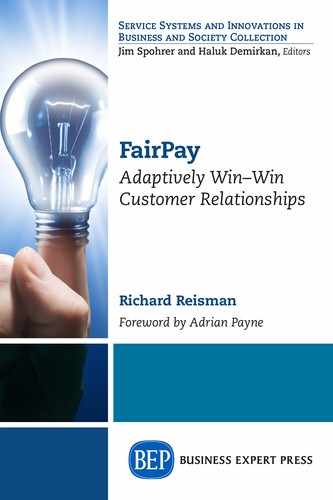The concept of FairPay has received very positive response, but has been in the development phase until now, and is not yet widely known—hence the purpose of this book. The next step is to undertake definitive proof of concept testing in practice. There has been strong interest from senior executives in a diversity of content and platform companies, entrepreneurs, and prominent scholars. The component strategies are proven, and this new combination is seen to be sensible, promising, and even revolutionary. The hurdles are not large—once proof of concept tests are in hand, progress can be expected to be very rapid.
What are the hurdles facing enterprises as they consider moving in this direction? (More at FPZLink.)
Trial Investment:
Software: The phased approach suggested in Chapter 14 can limit the initial investment, and extensive materials on the high-level program design are online, but the software for tracking fairness and gating offers will take some coding. Getting a simple but fully gated level of FairPay into a limited trial might take on the order of several man-months of software development, as corroborated by independent experts.
Business analysis: The design of how a trial fits into a business and the evaluation of test findings will also take some work. That also might require several man-months of analysis, as corroborated by independent experts. Several of my academic collaborators have proposed to work as a team to assist in design and analysis of trials, and other researchers have also expressed interest in assisting in this ground-breaking work.
Business risk: As explained earlier, trials can be confined to small test populations and framed as experiments—to minimize revenue at risk and any broader business risk. While some may be tempted to wait and be fast followers, there are first mover advantages. FairPay trials could also have very powerful public relations value—with test subjects and more broadly.
Customer Response:
Learning curve: This radical shift in thinking about business relationships will take some customer (and business) education, and will involve a learning curve. Care should be taken to manage the education process to ensure good results, and to avoid mistaking correctible failures in customer selection, education, and acclimatization as flaws that are inherent in the FairPay strategy.
Cognitive burden: There may be some cognitive burden to the dialogs on value and pricing actions, but ease in restaurant tipping suggests that this problem is very tractable with effective choice architectures, and can become quite simple after the initial learning curve.
Fairness: Some customers may view personalized pricing as unfair, and some may seek to game the system to pay the least permissible. That can be minimized and contained by effective market segmentation, transparent explanation of the justification for individual variations, and simple validation of customer value feedback against measured usage data.
The most important strategy is to focus on lines of business and customer segments that promise to be initial sweet spots. FairPay represents a consumer behavior change (even if that is back toward a more natural, cooperative kind of relationship). As outlined in Chapter 14, the sweet spots will be segments that are disposed to high fairness and generosity (such as superfans getting much-appreciated service from deserving providers) and that are willing to invest some effort to be responsible about sharing pricing power. Once the power of FairPay is demonstrated in such sweet spots (even if restricted to a minority of customers), broader expansion will become more and more compelling to both customers and firms.
In summary, FairPay is radical paradigm shift for both businesses and consumers that will take some time and effort, but promises rich rewards, and solutions to increasingly urgent problems.
It relies on a new synergy to drive situational behaviors of fairness, trust, and transparency that have become unconventional in customer relationships, but are clearly natural, and had been a common norm.
The payoffs promise to be very large, and urgently needed, and the initial hurdles are very manageable. Its full power will take time to develop, but it promises to offer immediate benefits in important markets.
Enterprises should seek to understand this new direction and how it applies to their business, and think about how best to start on a managed path to better, more adaptively win–win, customer relationships.
